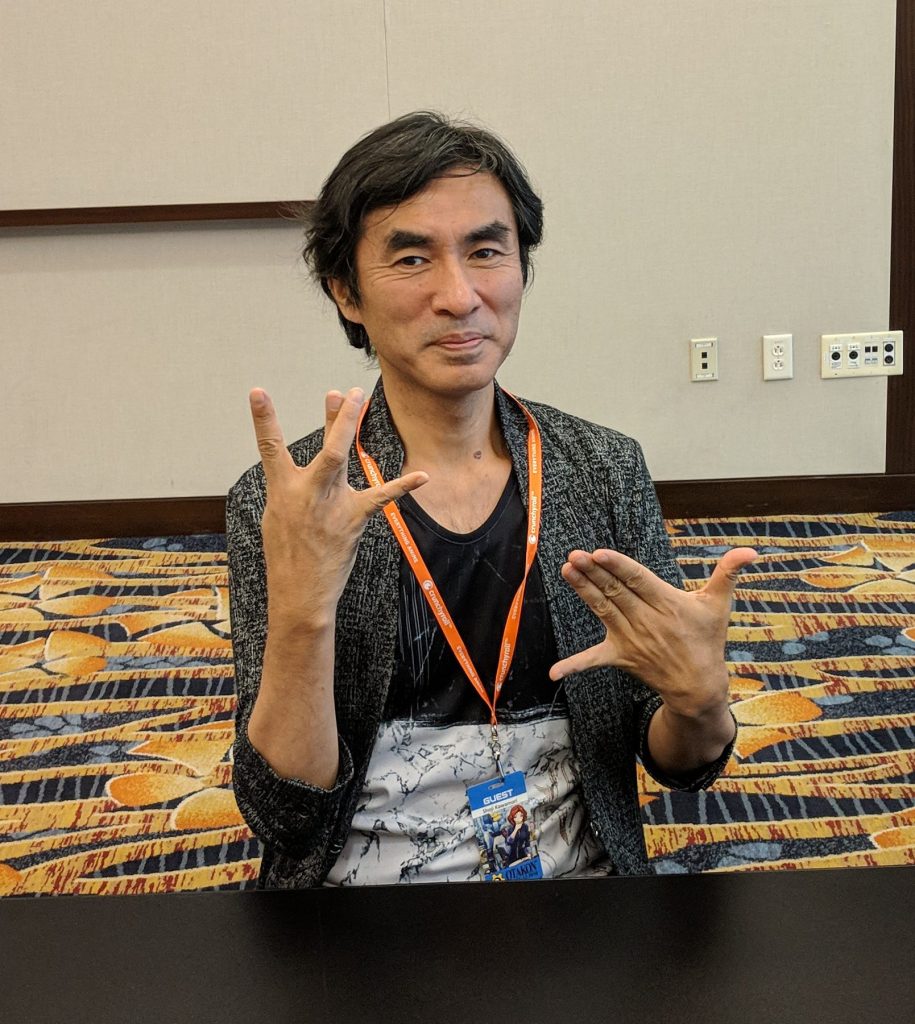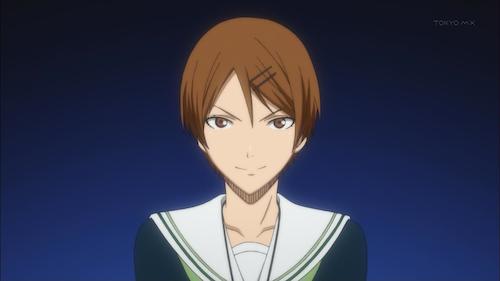
Anime Expo 2012 was my first Anime Expo and my first west coast convention. While I’m not one of those really thorough con veterans, I still found some interesting differences between it and the conventions I’ve been to before, both when compared to the bigger cons as well as the smaller ones. Located in Los Angeles, it uses its position to its fullest.
Industry
In a change of pace of sorts, I somewhat foolishly attended fewer industry panels than I normally would at a convention. I say somewhat only because of the fact that, for so many of them, they largely amount to announcements (which appear within a minute on Twitter) and they have Q&A sessions which lack teeth. Sometimes you can get a good one, and I try hard to ask good questions when I can, but the more “official” it is, the less chance you’ll get a decent answer. The foolish part is the fact that I was accustomed to Otakon, where one must generally choose between autographs and panels, an only later found out that AX works on a system of giving people “skip the line” tickets for attending guest panels. Lesson learned for (hopefully) next time.
Despite those limitations, AX2012 was by far my most autograph-heavy convention experience I’ve ever had, which is a reflection of one of Anime Expo’s greatest strengths: the sheer amount of guests, particularly Japanese ones. I managed to get stuff signed by the staff from Madhouse, Animetal USA, Kajiura Yuki + FictionJunction, a limited autographed image from manga artist Toume Kei (who wasn’t attending but offered the images as part of a gallery), and probably the biggest one for me: an OVA of Legend of the Galactic Heroes signed by Horikawa Ryo, voice of Reinhard von Lohengramm. I happened to take a fantastic picture of him.

I did manage to go to a few panels as well. I went to the Animetal USA Q&A just to see that bit of spectacle (it was calmer than I had expected), and attended the panel for GoFA, or Gallery of Fantastic Art. GoFA can be described as an organization dedicated to taking anime and manga and giving it a sense of realism by creating products and opening galleries based on those works. The panelists showed off actual products such as glasses and watches based on the designs of anime and manga creators, and mentioned that artists such as Hoshino Lily (Mawaru Penguindrum character designer) and Fukumoto Nobuyuki (Kaiji, Akagi manga creator) have or will have gallery exhibitions in Japan. Apparently they’ve been a part of AX for a long time now, but this was their first time running a panel, a privilege they received because they’re actually producing a stop motion animation based on the artwork of Toume Kei (Sing Yesterday for Me). We got to see a very short preview, about which not much can be said because it lasted less than two minutes.
Another panel of interest was a manga workshop run by an actual manga artist whose name I sadly did not catch (though Peepo Choo’s Felipe Smith was helping to translate). I was unable to stay for the entire thing, but what I saw focused a good deal on anatomy, working from the idea that a solid foundation in realism is needed in order to deviate from it. While I don’t entirely agree with that assessment, I think it is nevertheless an excellent skill to foster and definitely a legitimate way to begin to create art and comics. I do wish that manga workshop panels and the like could move more towards paneling and page layout, but I get the feeling that character design is much more immediate has much more impact for the vast majority of people.
Concerts
I went to all three of the concerts—Animetal USA, FictionJunction, and LiSA—in some capacity, though could only stay for a small portion of the FictionJunction concert due to some scheduling conflicts (more on that later). Animetal USA had by far the smallest crowd, but an enthusiastic one nonetheless, and it was great to hear their take on classic anime songs from shows like Gatchaman, Mazinger Z, and Saint Seiya. I’ll admit, I’m not a fan of heavy metal (though that’s not to say I don’t enjoy it), but I’m glad I went. Later at their signing, the most impressive thing was that there was a real Animetal USA cosplayer, a girl dressed as guitarist “Speed-King” (aka Chris Impellitteri). What little I heard of FictionJunction was definitely excellent. I definitely wish I could’ve seen it all.

The LiSA concert is one of the highlights of AX2012 for me, because I went in only knowing her as the singer of the Fate/Zero opening but not particularly interested, and came out of it as a fan. Not only were all of her songs really good, but her practically-headbanging enthusiasm just filled the concert venue. Impressively, she managed to do the emceeing for her own concert almost entirely in English. I’m not sure how much of it was from actual fluency and how much was practiced and scripted, but she pulled it off regardless. She gave us the benefit of singing the opening to a new summer anime (that wasn’t even out yet), Sword Art Online, and the concert actually made me want to check it out despite only having a passing interest in it prior.
Non-Industry Panels
If AX’s main strength is its industry presence, its main weakness is a lack of interesting fan panels. While fan panels can always vary in quality, they tend to follow along the same basic goals of bringing fans together in order to share in a topic or to convey new ways of seeing the things we love, hat’s not to say that the fan panels at AX weren’t or couldn’t be interesting, but that the sheer amount of “official” panels somewhat limited the overall presence of fan panels. On top of that, many were workshops or something similar, but personally speaking I generally don’t go to conventions for workshops.
I attended the Bloggers and Podcasters Town Hall, not knowing quite what to expect, especially given the use of the term “Town Hall,” but it ended up actually being fairly accurate. Moderated by the Benjamin “Benu” Lopez of the long-running Anime Genesis podcast, the audience (including myself) discussed various topics, including the move to include blogging into a podcast and vice versa, as well as ways to break up the factionalism and cliques which often appear around groups of bloggers/podcasters. It was a fruitful discussion, and I got to meet a number of people I’d only read/heard previously, though I do kind of wish that we didn’t just talk about reaching out but also ways to refine and improve our existing work. As I said at the panel, I do believe that content is king.
Given that I’ve been a part of academia for a while now, I went with the purpose of attending as many of the academic panels as I could. At times, this caused conflict as I had to sacrifice seeing a certain guest in order to see what other researchers were working on, but I think it was well worth it. Even though other events clearly overshadowed the attendance of the academic track, there was something distinctly different about having it as part of a general convention instead of simply being a stand-alone academic conference. Mainly, I felt like presenters had prepared for a mix of academic and non-academic audiences, and it made the presentations a little more fun than what would normally happen.
The highlights of the academic track were the keynote address, where Professor Jeffrey Dym of UC Sacramento discussed his “History of Manga” class, and the “We Make Manga” panel run by Northrop Davis of the University of South Carolina. In both cases, the speakers really knew what they were talking about, and described the challenges they faced in creating their classes, how they designed their curricula, and what sources they used as the foundations for their classes. For Dym’s panel, the things that stood out to me the most were his lament that Ishinomori Shoutarou did not have more work out in English despite his legendary status and the fact that he hesitated on including sports manga in his class because of how little of the really groundbreaking series (Star of the Giants for instance) exist in English. For Davis’s panel, it was definitely the fact that he mentioned his class as being designed to somewhat mimic the editor system used by manga publishers in Japan, especially given the degree to which endeavors such as Tokyopop’s old OEL material lacked in that very area.
I think the attendance could have been stronger if the academic panels hadn’t been added so late. The large color guide didn’t even have those panels, and it was clear that despite the giant screens showing the updated schedules that many attendees ignored it. When I presented at my own panel (which ended up overlapping with the FictionJunction concert due to a 40 minute delay, thus eliminating my chance of doing both), it was to a rather sparsely populated room, which I honestly think could have been made more lively if only people knew about it (and if the concert didn’t start and end when it did). Overall, I think I did an all right job (I did a visual analysis of the manga 7 Billion Needles), I just wish more of you could’ve attended it!
Cosplay
I think I’ll say it: AX2012 was possibly the best convention I’ve ever attended in terms of cosplay. Not only were many of the costumes excellent, but I don’t think I’ve ever seen so much variety. Popular cosplay topics such as Homestuck and Hetalia!, while still very present, didn’t even come close to dominating the visual landscape of the con, and cosplays I had resigned myself to possibly never seeing appeared in numbers. Whereas previously I had seen zero Dragon Kid cosplays from Tiger & Bunny, this time I saw five.


I remember being the only person to clap for Dragon Kid at Otakon 2011’s Sunrise panel, so this was a pleasant change.

In addition, I thought I’d never see a Precure cosplay at an American con, but I was gladly proven wrong. Have you watched Heartcatch yet? It’s really good.

Anyway, I’ll let the rest of the cosplay speak for itself, though keep in mind that this certainly isn’t an accurate representation of all of the cosplay at AX2012, merely what I photographed.




























Final Thoughts
So there went my first Anime Expo. If I had to do it over again, I probably would’ve found a better medium between panels and autographs, and I would’ve definitely tried to see more faces. Also, the Kinokuniya in LA is definitely better than the one in NYC.








































